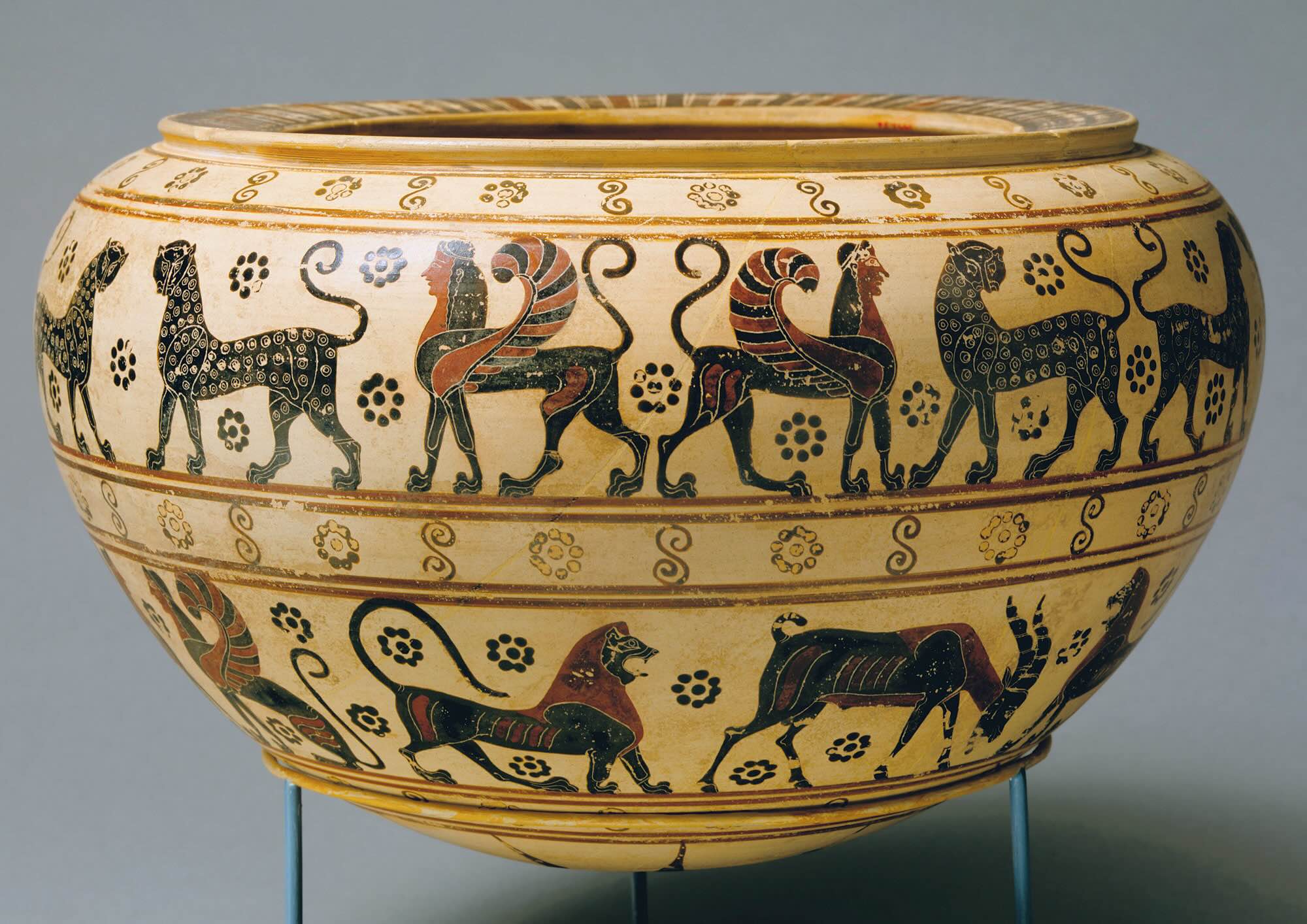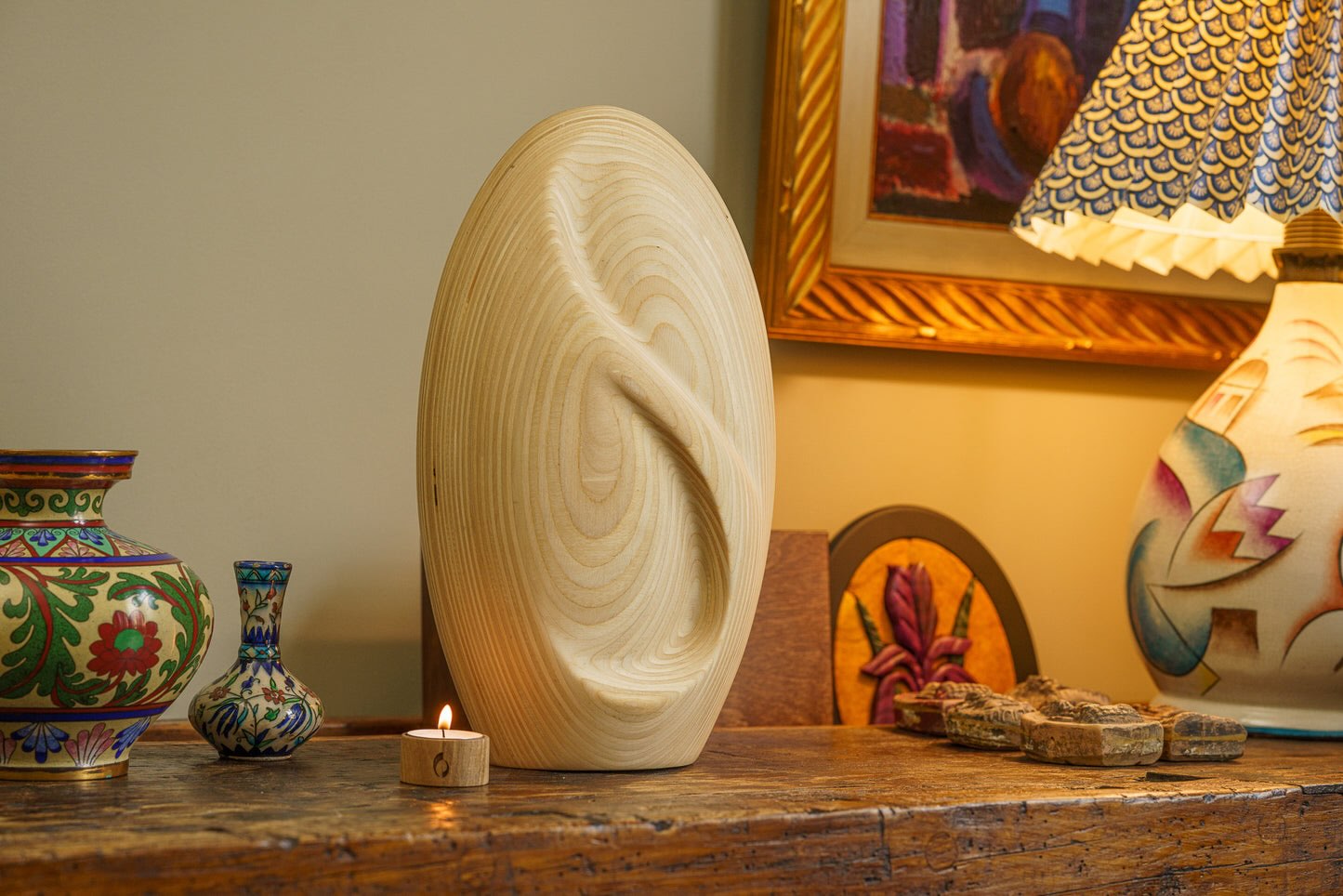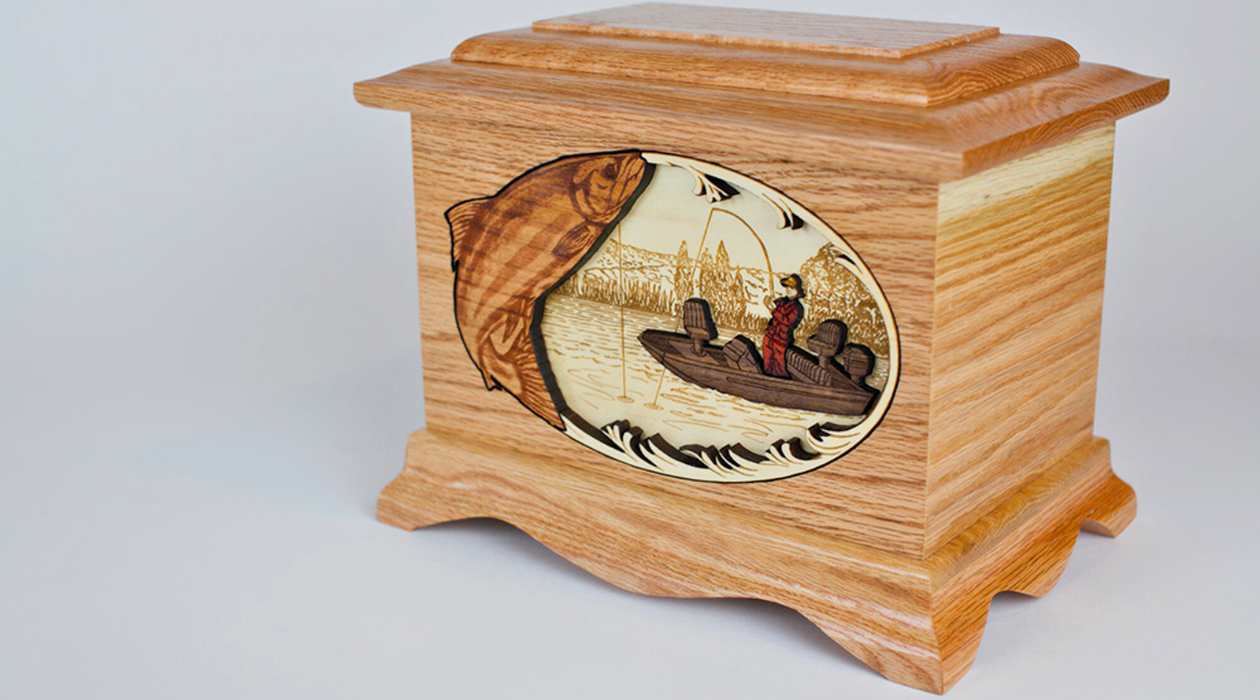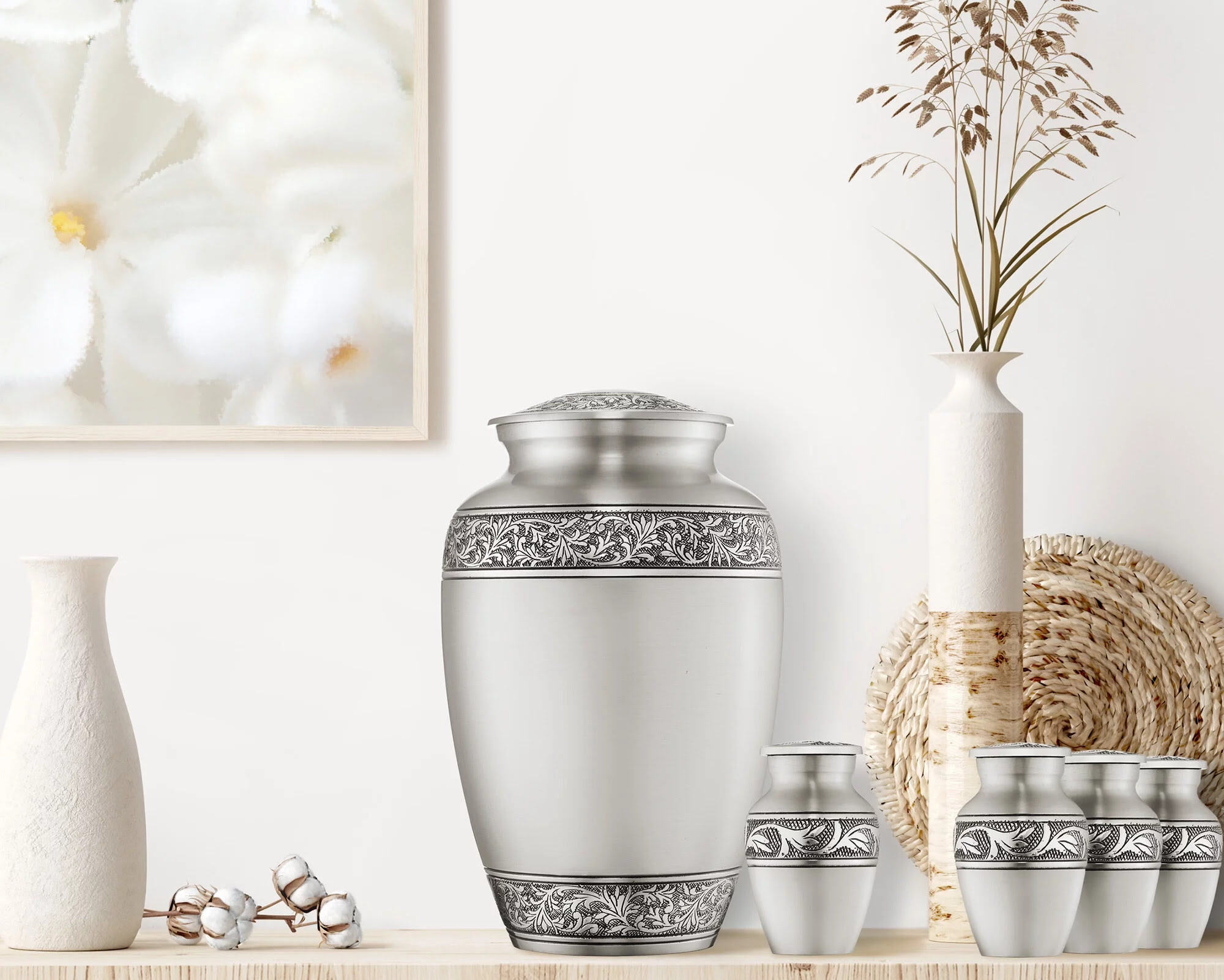Home>Furniture & Design>Interior Design Trends>Historical Uses Of Greek Urns


Interior Design Trends
Historical Uses Of Greek Urns
Published: December 19, 2023
Discover the timeless beauty of Greek urns and how they have influenced interior design trends throughout history. Explore the historical uses and significance of these exquisite artifacts.
(Many of the links in this article redirect to a specific reviewed product. Your purchase of these products through affiliate links helps to generate commission for Storables.com, at no extra cost. Learn more)
Introduction
Welcome to the fascinating world of Greek urns, where history, art, and culture collide. Greek urns have captivated the imagination of people for centuries, with their exquisite craftsmanship and rich symbolism. These ancient vessels were not only functional objects but also served as conduits of storytelling, memorializing important events and individuals from the past.
In this article, we will delve into the historical uses of Greek urns, exploring their significance in ancient Greek society, their funerary purposes, and their role as decorative art pieces. We will also uncover the presence of Greek urns in mythology and shed light on their enduring legacy through archaeological finds.
So, put on your metaphorical archaeologist’s hat and let’s embark on a journey through time to unravel the mysteries and beauty of Greek urns.
Key Takeaways:
- Greek urns in ancient Greece served multifaceted roles, from storing goods to commemorating the deceased and bridging the gap between the mortal and divine realms through intricate artistry and symbolism.
- Through their depictions of mythology and historical events, Greek urns continue to captivate and inspire, providing valuable insights into ancient Greek culture, beliefs, and artistic achievements.
Read more: What Were Greek Vases Used For
Greek Urns in Ancient Greece
In ancient Greece, urns were an integral part of daily life and held great importance in both religious and secular contexts. These vessels were typically made from clay and were beautifully crafted by skilled artisans.
One of the primary uses of Greek urns in ancient Greece was as containers for storing and transporting various liquids, such as wine, olive oil, and water. These urns, known as amphorae, were crucial for preserving and trading commodities, playing a central role in the flourishing Greek economy.
However, Greek urns were not merely utilitarian vessels. They also held significant cultural and religious value. Particularly in the realm of funerary rituals, Greek urns became powerful instruments in commemorating the deceased.
The practice of cremation was prevalent in ancient Greece, and the ashes of the deceased were often placed in urns. These funerary urns, known as lekythoi, were typically adorned with intricate designs and served as a permanent resting place for the remains of loved ones.
Besides serving as vessels for cremated remains, Greek urns were also used as grave markers. These large, decorated urns, known as larnakes, were placed above or on the side of graves to commemorate the departed and provide a visual tribute.
Furthermore, Greek urns were commonly used in religious ceremonies and offerings. They would be filled with various offerings such as food, libations, and precious objects, and presented to gods and goddesses during rituals. These urns were believed to bridge the gap between the human and divine realms, acting as a conduit for communication and reverence.
The artistry and craftsmanship of Greek urns reached its pinnacle during the Classical period (5th and 4th centuries BCE). During this time, urns were decorated with intricate scenes from mythology, history, and everyday life. The techniques used to create these designs included black-figure and red-figure pottery, which allowed for detailed and dynamic depictions.
Overall, Greek urns in ancient Greece played a multifaceted role, serving as vessels for storing and transporting goods, commemorative containers for the deceased, grave markers, and religious offerings. These urns were not only functional but also served as beautiful works of art, reflecting the cultural and spiritual beliefs of the ancient Greeks.
Funerary Use of Greek Urns
The funerary use of Greek urns held great significance in ancient Greek culture. The practice of cremation was common during this time, and Greek urns played a crucial role in preserving the remains of the deceased and facilitating the mourning process.
When a person passed away, their body would be cremated, and the ashes would be carefully collected and placed in an urn. These urns were often ornately decorated, with intricate patterns, scenes from mythology, or personalized designs.
Funerary urns, known as lekythoi, were typically cylindrical in shape and had a narrow neck and handles. These vessels were made from various materials, including clay, marble, or even precious metals like gold or silver, depending on the wealth and social status of the individual.
The use of Greek urns for cremation allowed for a more practical and efficient method of preserving the remains of the deceased. It also facilitated the portability of the ashes, enabling families to transport and relocate their loved ones’ remains if necessary.
During funeral ceremonies, Greek urns would be prominently displayed, either in the family home or at the gravesite. They served as a poignant reminder of the deceased, providing a physical connection and a tangible memorial for family and friends to visit and pay respects.
In addition to their practical use, Greek funerary urns were imbued with symbolism and meaning. The decoration on the urns often depicted motifs related to the afterlife, such as representations of the deceased being guided by gods or specific scenes from Greek mythology that illustrated notions of life, death, and the journey to the underworld.
These artistic representations on the urns served not only as a visual tribute but also as a way of expressing beliefs about the afterlife and offering comfort to the bereaved. It was believed that the designs and motifs on the urns would assist the deceased on their journey to the realm of the dead and aid in their transition to the afterlife.
The intricate details and symbolism found on Greek funerary urns illustrate the deep cultural and spiritual beliefs of the ancient Greeks regarding death and the afterlife. These urns were a tangible link between the living and the deceased, providing solace, remembrance, and a means of honoring the departed.
Decorative Purposes of Greek Urns
Beyond their utilitarian and funerary functions, Greek urns also served as exquisite decorative pieces in ancient Greek society. These vessels showcased the exceptional craftsmanship and artistic expression of the Greek artisans, transforming them into objects of beauty and admiration.
Greek urns were created in various shapes and sizes, each serving a specific purpose and often reflecting the artistic preferences of the time period in which they were made.
One of the most iconic types of Greek urns is the amphora. These large, two-handled vessels were not only used for storing and transporting goods but also became highly sought-after artistic pieces. Amphorae were often adorned with intricate patterns, scenes from mythology, or depictions of daily life. They could be displayed in homes, public spaces, or even temples, adding a touch of elegance and sophistication to the surroundings.
Another popular type of decorative Greek urn was the krater, which was primarily used for mixing wine and water during symposiums and social gatherings. These urns were often quite large and elaborately decorated. They were not only functional but also served as status symbols, demonstrating the wealth and refinement of the host.
Greek urns used for decorative purposes were crafted using various techniques, including black-figure and red-figure pottery. The black-figure technique involved painting black figures onto the red clay surface of the urn and then incising the details with a sharp instrument. On the other hand, the red-figure technique allowed for more intricate and detailed designs, with the background painted black and the figures left in the red color of the clay.
The decorative motifs found on Greek urns were diverse and reflected the artistic trends and cultural beliefs of the time. Scenes from mythology, such as the adventures of gods and heroes, were a popular theme. These intricate and dynamic depictions brought the ancient stories to life and allowed people to visually connect with the myths and legends that shaped their culture.
Nature-inspired designs, including flowers, plants, and animals, were also commonly found on decorative Greek urns. These designs celebrated the beauty of the natural world and represented the harmony between human existence and the environment.
Moreover, decorative Greek urns often showcased scenes from everyday life, including depictions of sports, music, dance, and domestic activities. These scenes provided a glimpse into the daily routines and social customs of the ancient Greeks, serving as a visual record of their culture and traditions.
Throughout history, Greek urns have been revered as objects of aesthetic pleasure and refined taste. Their decorative purposes extended far beyond their practical functions, enriching both public and private spaces with their artistry and storytelling. Even today, Greek urns continue to inspire and captivate with their timeless beauty and ability to transport us to the vibrant world of ancient Greece.
Greek urns were commonly used in ancient Greece for storing the ashes of the deceased. They were also used as grave markers and for holding offerings to the gods.
Greek Urns in Mythology
In ancient Greek mythology, Greek urns held a prominent place, not only as artistic objects but also as vessels of storytelling and representations of the gods and mythical heroes. These urns played a significant role in perpetuating and immortalizing the epic tales and legends of Greek mythology.
The scenes depicted on Greek urns often revolved around the stories of gods and goddesses, mythical creatures, and heroic figures. These narratives served as visual interpretations of the ancient myths, allowing the viewer to connect with the characters and events that shaped Greek culture.
One of the most famous examples of Greek mythology depicted on urns is the story of Pandora. According to myth, Pandora was the first woman created by the gods, and her urn contained all the evils of the world. Greek urns often featured scenes showing her holding the urn, symbolizing the unleashing of misfortune and suffering upon humanity.
The adventures of mythological heroes, such as Heracles, Theseus, and Perseus, were also commonly depicted on Greek urns. These scenes showcased their heroic feats, battles with mythical beasts, and interactions with gods and goddesses. The urns served as a visual medium to honor and celebrate the courage and strength of these legendary heroes.
Furthermore, Greek urns often depicted gods and goddesses in various forms and roles. The powerful Olympian gods, such as Zeus, Hera, Poseidon, and Athena, were frequently depicted on urns, often in regal postures or engaged in divine activities. These depictions served as reminders of the influence and omnipresence of the gods in Greek society.
Mythological creatures, such as centaurs, sirens, and satyrs, also made appearances on Greek urns. These fantastical beings were often depicted in scenes of conflict or collaboration with humans and gods, adding an element of the supernatural and mysterious to the artwork.
Greek urns, with their vivid and detailed representations of mythological stories and characters, allowed the ancient Greeks to connect with their cultural heritage and shaped their understanding of the divine and heroic realms. These urns served as conduits between the mortal world and the mythical world, bridging the spiritual and physical realms.
Today, the depictions of Greek mythology on urns continue to captivate and inspire. They have been a source of inspiration for artists, writers, and scholars, shaping our understanding of ancient Greek mythology and its enduring impact on art and culture.
Read more: What Are Urns
Greek Urns in Archaeological Discoveries
Greek urns have played a pivotal role in our understanding of ancient Greek civilization through archaeological discoveries. Over the centuries, countless Greek urns have been unearthed from archaeological sites, providing valuable insights into the artistry, culture, and history of the ancient Greeks.
Archaeologists have uncovered Greek urns in a wide range of settings, including ancient tombs, sanctuaries, and settlements. These discoveries have presented a treasure trove of information about the practices and beliefs of the ancient Greeks.
One of the most notable archaeological discoveries related to Greek urns is the tomb of the ancient Macedonian royal tomb of Philip II at Vergina. Inside this tomb, archaeologists found a collection of highly ornate gold urns, known as larnakes, which contained the cremated remains of Philip II and other members of the Macedonian royal family. These incredible urns exemplify the craftsmanship and artistic skill of the ancient Greeks.
In addition to royal tombs, numerous burial sites have yielded a wealth of Greek urns. Archaeologists have discovered urns adorned with intricate designs and symbols, providing a glimpse into the beliefs and customs surrounding death and the afterlife in ancient Greece.
Furthermore, archaeological excavations of ancient Greek settlements, such as Delphi, Olympia, and Athens, have unearthed a rich variety of Greek urns. These urns were often used for everyday purposes, including storage, transportation, and religious ceremonies.
Archaeological finds of Greek urns have not only revealed their functional and decorative roles but have also shed light on the artisans and workshops responsible for their creation. Inscriptions and signatures on the urns have led to the identification of specific potters and painters, allowing us to study their styles and techniques.
Moreover, the study of Greek urns found in archaeological contexts has expanded our knowledge of the chronological development of pottery production. By analyzing the different styles and motifs depicted on the urns, archaeologists have been able to trace the evolution of Greek pottery throughout various periods, such as the Geometric, Archaic, Classical, and Hellenistic eras.
Archaeological discoveries related to Greek urns have not only provided us with valuable historical and artistic insights but have also sparked ongoing research and debate. Through the study of these urns, archaeologists, historians, and art historians continue to unravel the complexities of ancient Greek society and deepen our understanding of this remarkable civilization.
Conclusion
Greek urns have left an indelible mark on the history of art, culture, and mythology. These vessels, crafted with meticulous skill and adorned with intricate designs, served a multitude of purposes in ancient Greek society.
From their practical use as containers for storing and transporting goods, to their function as vessels for cremated remains in funerary rituals, Greek urns held great significance in the daily lives and beliefs of the ancient Greeks.
As decorative objects, Greek urns showcased the artistic prowess of the craftsmen who meticulously painted and carved intricate scenes from mythology, history, and everyday life. These visually captivating designs bridged the gap between the mortal and the divine, immortalizing the stories and legends that shaped Greek culture.
In mythology, Greek urns played a vital role in perpetuating and maintaining the rich tapestry of ancient Greek stories. The imagery depicted on these urns brought to life the adventures of gods, heroes, and mythical creatures, connecting the viewer with the realms of the divine and the supernatural.
Through archaeological discoveries, Greek urns have provided incredible insights into the art, culture, and history of ancient Greece. Unearthed from tombs, sanctuaries, and settlements, these urns have shed light on burial customs, religious practices, and the artistic techniques employed by Greek artisans.
The examination of Greek urns has revealed the evolution of pottery production over time, from the Geometric and Archaic periods to the Classical and Hellenistic eras. The study of these urns has allowed us to trace the development of artistic styles, identify individual artists and workshops, and appreciate the diversity of motifs and designs.
In conclusion, Greek urns are more than just utilitarian vessels or artistic objects. They are windows into the past, providing valuable insights into the beliefs, customs, and artistic achievements of ancient Greek civilization. Through their enduring beauty and lasting impact, Greek urns continue to captivate the imagination and inspire us to delve deeper into the rich tapestry of the ancient world.
Frequently Asked Questions about Historical Uses Of Greek Urns
Was this page helpful?
At Storables.com, we guarantee accurate and reliable information. Our content, validated by Expert Board Contributors, is crafted following stringent Editorial Policies. We're committed to providing you with well-researched, expert-backed insights for all your informational needs.















0 thoughts on “Historical Uses Of Greek Urns”